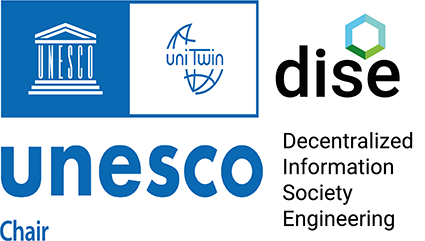2024
Mclaren, Arthur; Wang, Yulu; van de Velde, Charlotte; Green, Ed; Wieringa, Roel; Gordijn, Jaap
Value-based Security Requirements in a Highly Decentralized Digital Ecosystem: The Music360 Case Proceedings Article Forthcoming
In: Proceedings of the POEM 2024 Forum, Forthcoming.
@inproceedings{POEM-Forum-2024,
title = {Value-based Security Requirements in a Highly Decentralized Digital Ecosystem: The Music360 Case},
author = {Arthur Mclaren and Yulu Wang and Charlotte van de Velde and Ed Green and Roel Wieringa and Jaap Gordijn},
url = {https://www.dise-lab.nl/value_based_security_requirements_in_a_highly_decentralized_digital_ecosystem__the_music360_case/},
year = {2024},
date = {2024-10-22},
urldate = {2024-10-22},
booktitle = {Proceedings of the POEM 2024 Forum},
abstract = {Security requirements in digital ecosystems should be first and foremost driven by the notion of economic value. Attackers are interested in objects of value, which are exchanged between actors in a network of organizations and end-users. We explain how we derive data-oriented security requirements by means of high level goals, a value model representing the ecosystem, and a data model detailing the value model. The approach is illustrated and validated in a complex ecosystem in the music sector.},
keywords = {},
pubstate = {forthcoming},
tppubtype = {inproceedings}
}
Security requirements in digital ecosystems should be first and foremost driven by the notion of economic value. Attackers are interested in objects of value, which are exchanged between actors in a network of organizations and end-users. We explain how we derive data-oriented security requirements by means of high level goals, a value model representing the ecosystem, and a data model detailing the value model. The approach is illustrated and validated in a complex ecosystem in the music sector.
2023
Wang, Yulu; Kaya, Fadime; Gordijn, Jaap
Blockchain Governance Design: A Computer Science Perspective Proceedings Article
In: Rui, Marcela; Soffer, Pnina (Ed.): CAiSE 2023 International Workshops, pp. 178–185, Springer, D, 2023.
@inproceedings{Wang2023,
title = {Blockchain Governance Design: A Computer Science Perspective},
author = {Yulu Wang and Fadime Kaya and Jaap Gordijn},
editor = {Marcela Rui and Pnina Soffer},
url = {https://www.dise-lab.nl/wp-content/uploads/2024/10/978-3-031-34985-0_18.pdf},
year = {2023},
date = {2023-04-09},
urldate = {2023-04-09},
booktitle = {CAiSE 2023 International Workshops},
volume = {482},
pages = {178–185},
publisher = {Springer},
address = {D},
series = {LNBIP},
abstract = {In a decentralized governed ecosystem, decisions are made through a collaborative and consensus building design mechanism. Such a governance process is multifaceted, complex, dynamic, and challenging. Appropriate design contributes to the success and sustainability of the ecosystems. This paper presents a systematic literature review (SLR) of decentralized governance design (DGD), by exploring concepts such as Decentralized Governance (DG), Decentralized Autonomous Organization (DAO) from a computer science perspective. We identify and assess the characteristics of DG and the drawbacks that exist in current DGD approaches. A novel approach on DGD has been recently introduced, coined as DECENT that utilizes a conceptual modeling approach to improve decentralized ecosystems modeling. Contribution of this SLR study are: (1) Present a concise overview of current approaches on DG (2) Discuss decentralized ecosystems that employ DG and identification of
drawbacks (3) Motivate why conceptual modeling is a design requirement for DGD and discuss a DGD modeling method DECENT (5) Provide a clear direction to evolve the development of decentralized governance frameworks.
Keywords: Decentralized},
keywords = {},
pubstate = {published},
tppubtype = {inproceedings}
}
In a decentralized governed ecosystem, decisions are made through a collaborative and consensus building design mechanism. Such a governance process is multifaceted, complex, dynamic, and challenging. Appropriate design contributes to the success and sustainability of the ecosystems. This paper presents a systematic literature review (SLR) of decentralized governance design (DGD), by exploring concepts such as Decentralized Governance (DG), Decentralized Autonomous Organization (DAO) from a computer science perspective. We identify and assess the characteristics of DG and the drawbacks that exist in current DGD approaches. A novel approach on DGD has been recently introduced, coined as DECENT that utilizes a conceptual modeling approach to improve decentralized ecosystems modeling. Contribution of this SLR study are: (1) Present a concise overview of current approaches on DG (2) Discuss decentralized ecosystems that employ DG and identification of
drawbacks (3) Motivate why conceptual modeling is a design requirement for DGD and discuss a DGD modeling method DECENT (5) Provide a clear direction to evolve the development of decentralized governance frameworks.
Keywords: Decentralized
drawbacks (3) Motivate why conceptual modeling is a design requirement for DGD and discuss a DGD modeling method DECENT (5) Provide a clear direction to evolve the development of decentralized governance frameworks.
Keywords: Decentralized

